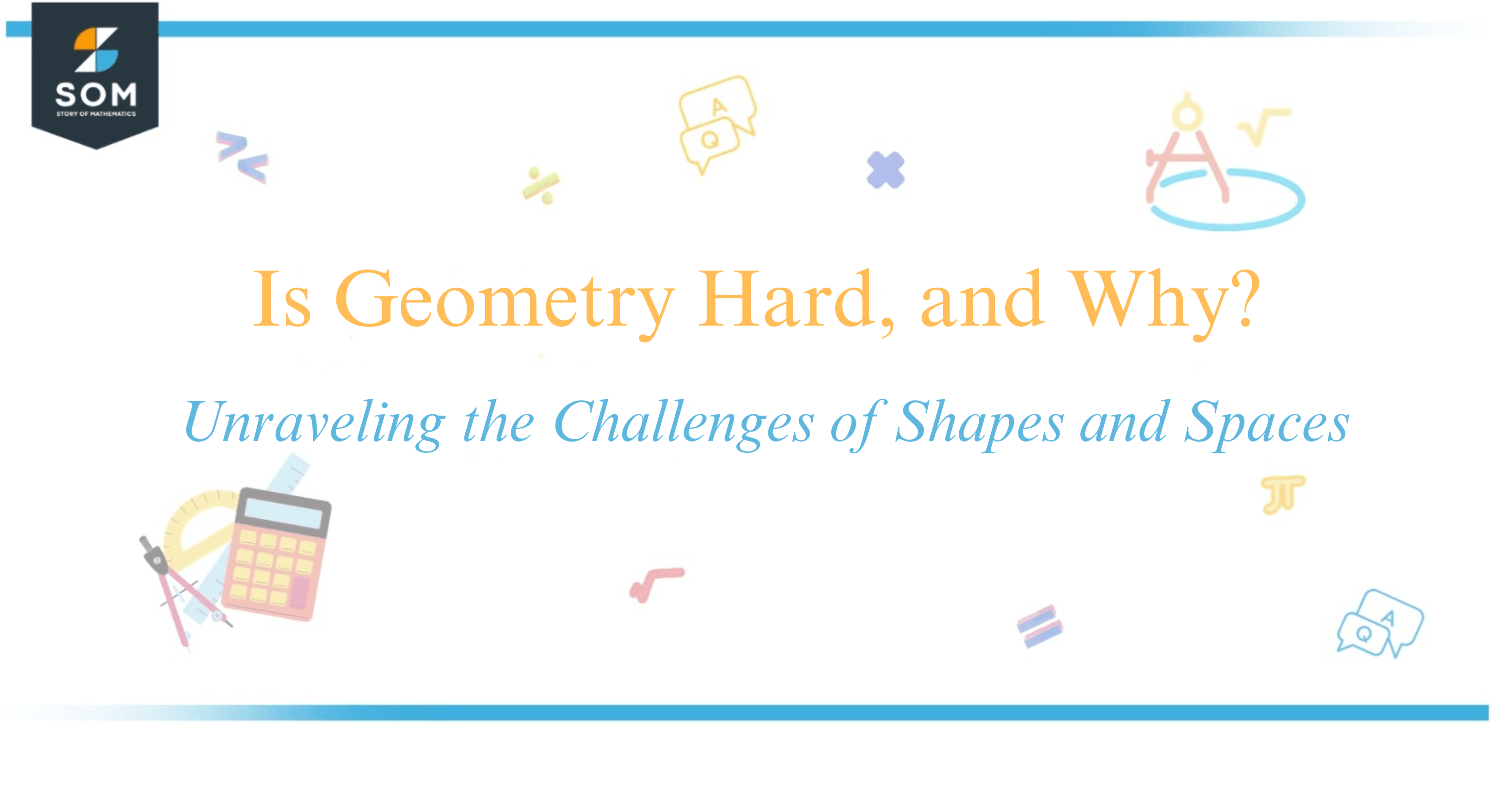
Yes, geometry can be challenging, largely due to its unique combination of logic, theory, and spatial understanding.
Unlike other areas of math, such as algebra which revolves around equations and variables, geometry involves visualizing and manipulating shapes and understanding the properties and relations of points, lines, surfaces, and solids.
It’s like learning a new language—a visual one that expresses ideas through drawings and figures. For many, the difficulty lies in the transition from the abstract thinking required in algebra to the concrete, visual thinking that geometry demands.

The subject requires strong reasoning skills and an ability to understand how different geometrical principles come together. On top of that, formal proofs in geometry often present a stumbling block.
These proofs demand students not only to follow but also to construct logical arguments, which can be quite a leap from the numerical operations they’re used to.
For this reason, it’s not uncommon to seek help or experience a fear of geometry—but like any challenge in math, overcoming it is a matter of practice, perspective, and finding the right strategies to approach problems.
If you’ve ever found yourself daunted by geometry, remember, that you’re not alone, and with persistence, those shapes and theorems can become manageable, even enjoyable puzzles to solve.
Fundamentals of Geometry
Geometry is a branch of mathematics concerned with the properties and relations of points, lines, angles, and surfaces. At its core lie a few fundamental elements:

Points: I view a point as an exact location in space, represented by a dot. Despite their simplicity, points form the foundation for more complex geometric shapes.
Lines: A line is an infinite collection of points extending in both directions. It has length but no thickness, making it one-dimensional. A key type of line in geometry is the straight line, which is the shortest path between two points.
Angles: When two lines intersect, they form an angle, represented by the symbol $\angle$. I measure angles in degrees, with a full circle comprising $360$ degrees.
Ancient Greek mathematicians, like Euclid, made significant contributions to the study of geometry. Euclid’s work, “Elements,” laid out the postulates and theorems that form the basis of Euclidean geometry. These consist of statements and propositions that assume a flat, two-dimensional plane.
Let’s take a brief look at some of Euclid‘s postulates that shaped the history of mathematics:
| Postulates | Description |
|---|---|
| A straight line segment can be drawn joining any two points. | From Euclid’s perspective, a line segment is the shortest path connecting two points. |
| Given a straight line segment, a circle can be drawn having the segment as radius and one endpoint as center. | This postulate asserts the round shape of a circle based on a line segment’s length. |
| All right angles are congruent. | Euclid highlighted the uniformity of right angles ($90$ degrees), regardless of their orientation. |
The principles of Euclidean geometry from Ancient Greece form the basis for modern geometric study and its applications across various fields. These foundations, from lines and angles to definitions of shapes, remain essential in my understanding of the spatial universe.
Geometry in Practice
As a student who navigated the abstract concepts and visual elements of geometry, I recognize its significance in both education and real-world applications.

At the high school level, teachers emphasize the importance of geometry because it develops critical cognitive skills and spatial thinking. This subject isn’t about memorizing facts; it’s about understanding the space around us through shapes and figures.
Visual learning is a significant part of geometry, aiding students like me in grasping abstract concepts. For instance, when learning about different shapes, visualizing them helps in understanding their properties.
Art and architecture heavily rely on geometric principles. Students who excel at visualizing geometric concepts can apply these skills in designing everything from simple graphics to complex buildings.
Here’s a glimpse of how geometry is applied:
| Field | Application of Geometry |
|---|---|
| Engineering | Analyzing structures, forces, fluid dynamics |
| Architecture | Designing buildings with precision and aesthetics |
| Education | Curriculum development, tutoring strategies |
In practices such as engineering, geometry is vital for evaluating the objects we create, ensuring they can inhabit the physical space safely. As for architecture, understanding geometry allows for a harmonious blend of form and function when crafting living spaces.
Teachers play a crucial role in guiding children through geometric concepts, and sometimes a tutor is helpful for those needing extra instruction. Practice is key, and regular exposure to these ideas supports cognitive development and skills enhancement.
As for me, I incorporate geometry into my life by recognizing its applications in everyday objects and spaces. This approach reinforces my education and appreciation for the intricate visual and abstract components of my environment.
Conclusion
In my journey through the intricacies of geometry, I’ve observed that its challenges often stem from its abstract nature. Unlike basic arithmetic or algebra, understanding geometry requires visualizing and comprehending space in two or three dimensions.
The leap from numerical equations to geometrical shapes and theorems like the Pythagorean theorem denoted as $a^2 + b^2 = c^2$, can be daunting for students who are more accustomed to linear problems.
Additionally, the introduction of proofs in geometry is a significant hurdle. Proofs demand a logical sequence of statements to justify a mathematical concept, which necessitates a deeper level of analytical thinking.
My advice to those struggling is to embrace this process; recognizing patterns and constructing reasoned arguments is a skill that will serve you well beyond mathematics.
I encourage patience and practice for those who find geometry difficult. It’s a subject that builds upon each concept progressively, so ensuring you have a solid grasp of the fundamentals is essential.
Remind yourself that it’s perfectly normal to require more time to master these concepts—consistency will eventually lead to proficiency. And don’t hesitate to seek out additional resources or assistance; sometimes, a different explanation can make all the difference.
Remember, like any skill, proficiency in geometry comes from stepping out of your comfort zone and tackling challenges head-on.
Approach the subject with a positive mindset, and let your curiosity guide you through the geometrical puzzles. Your efforts and determination will not only help you conquer geometry but also sharpen your problem-solving abilities in other areas.
